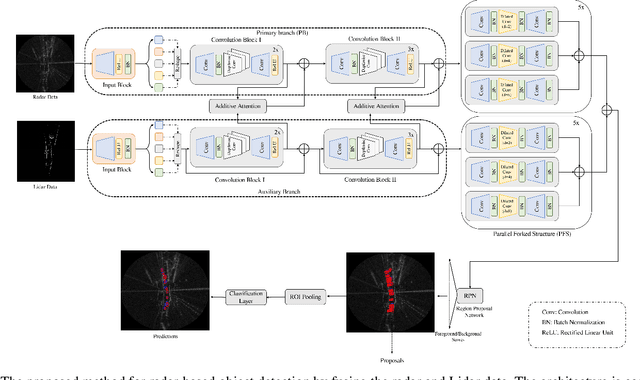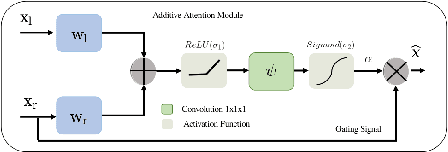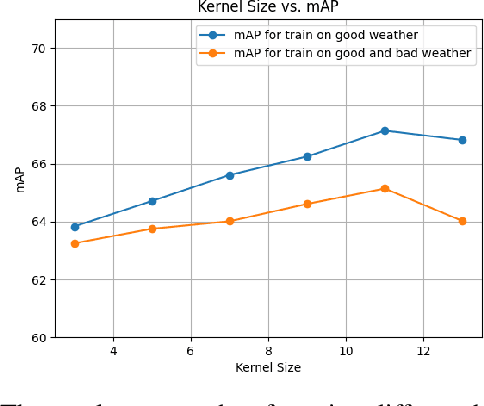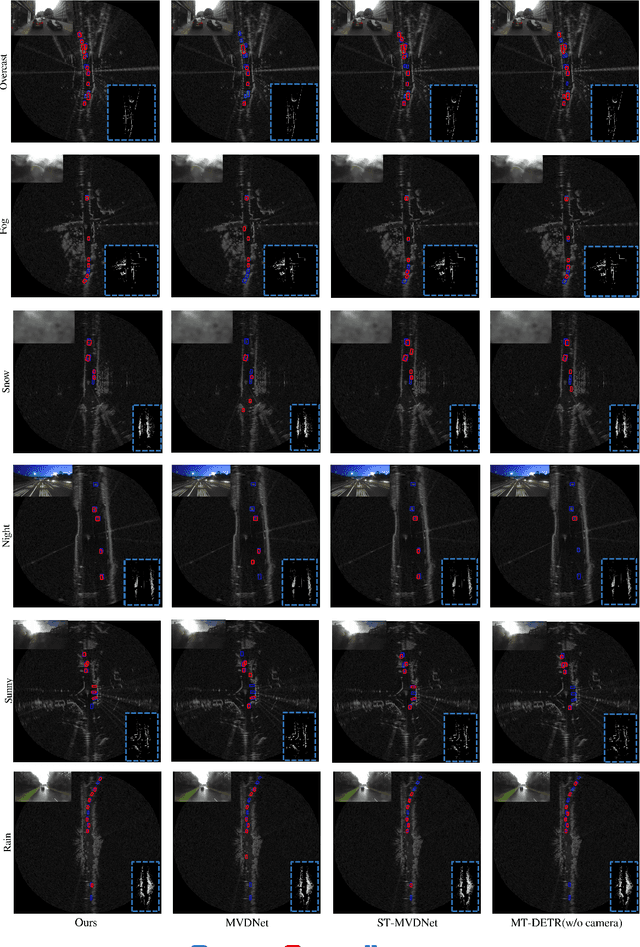Tomasz Kucner
Radar-Lidar Fusion for Object Detection by Designing Effective Convolution Networks
Oct 30, 2023



Abstract:Object detection is a core component of perception systems, providing the ego vehicle with information about its surroundings to ensure safe route planning. While cameras and Lidar have significantly advanced perception systems, their performance can be limited in adverse weather conditions. In contrast, millimeter-wave technology enables radars to function effectively in such conditions. However, relying solely on radar for building a perception system doesn't fully capture the environment due to the data's sparse nature. To address this, sensor fusion strategies have been introduced. We propose a dual-branch framework to integrate radar and Lidar data for enhanced object detection. The primary branch focuses on extracting radar features, while the auxiliary branch extracts Lidar features. These are then combined using additive attention. Subsequently, the integrated features are processed through a novel Parallel Forked Structure (PFS) to manage scale variations. A region proposal head is then utilized for object detection. We evaluated the effectiveness of our proposed method on the Radiate dataset using COCO metrics. The results show that it surpasses state-of-the-art methods by $1.89\%$ and $2.61\%$ in favorable and adverse weather conditions, respectively. This underscores the value of radar-Lidar fusion in achieving precise object detection and localization, especially in challenging weather conditions.
 Add to Chrome
Add to Chrome Add to Firefox
Add to Firefox Add to Edge
Add to Edge